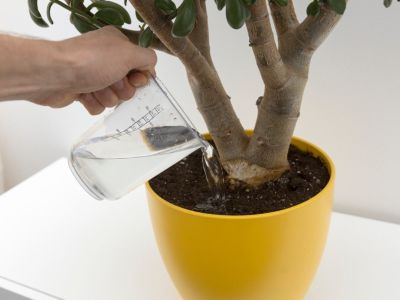Reasons for Leaching Houseplants
The minerals you’re getting rid of are called salts. They were dissolved in water and left behind when the water evaporated. You might see them in a white buildup on the surface of your plant’s soil or around the pot’s drainage holes. This is evidence that there are even more salts in the soil. As these salts build up, plants have a harder time drawing up water. This can lead to browned, wilted, or lost leaves and slowed growth. If too many salts build up, the plant will draw moisture from its own root tips and die. For this reason, knowing how to leach a houseplant is important for its overall health.
Tips for Leaching Salt from Soil
Leaching indoor plants sounds intimidating but it doesn’t need to be. In fact, leaching salt from soil is easy. If you see visible white buildup on the surface of the soil, gently remove it, taking care not to take away more than ¼ inch (0.5 cm.) of soil. Next, take your plant outside or put it in a sink or bathtub — anywhere lots of water will be able to drain freely. Then, slowly pour warm water over the soil, making sure it doesn’t overflow the rim of the pot. Pour twice as much water as the plant container would hold. For example, for a half gallon pot (2 L.), slowly pour a gallon (4 L.) of water. The water will absorb the salts and carry them away. Leaching houseplants every four to six months will make for clear soil and healthy plants.
